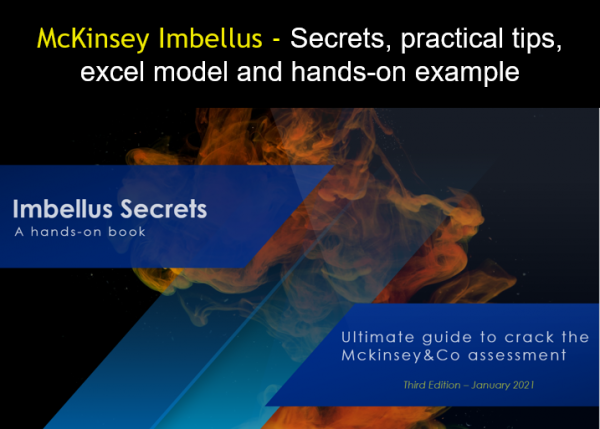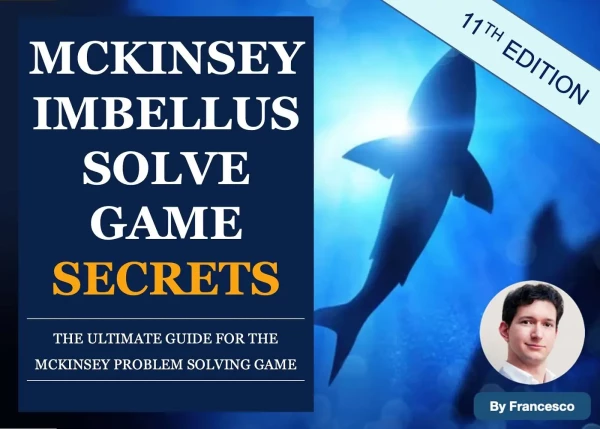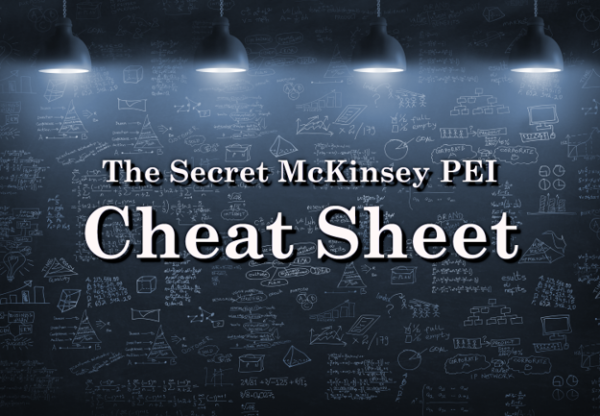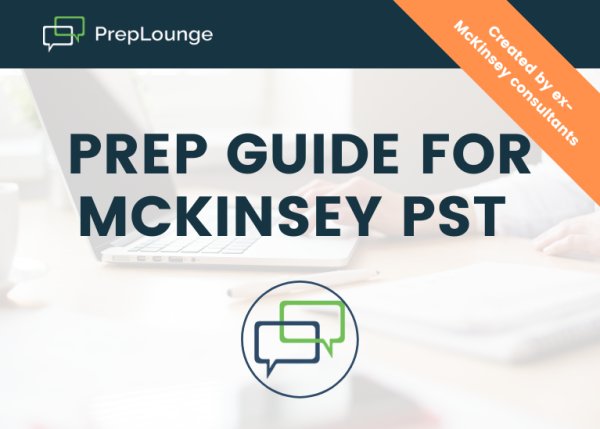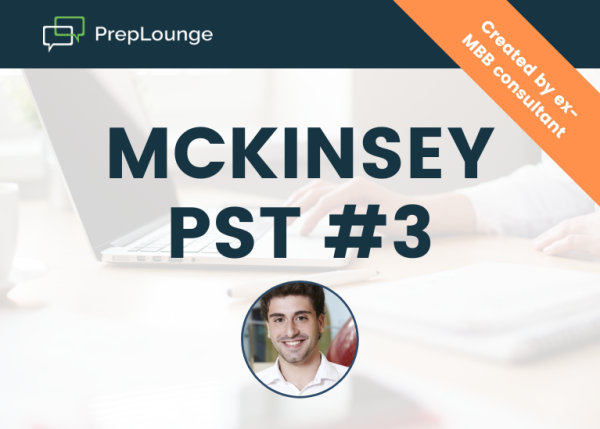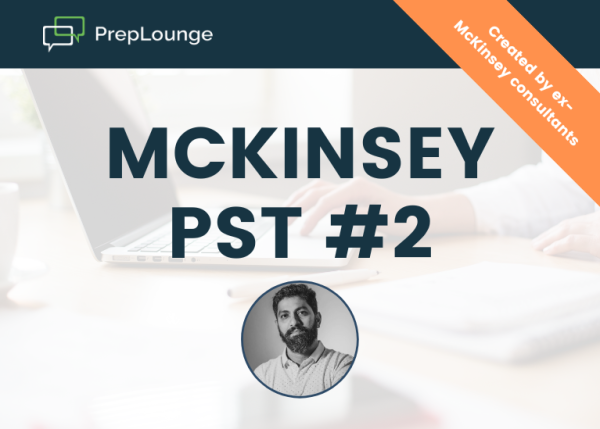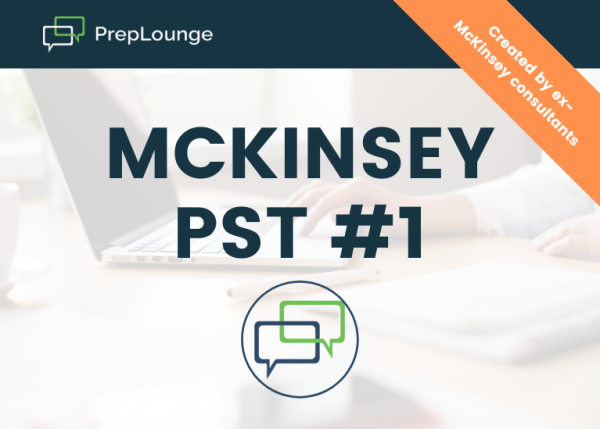Werde aktiv in unserer Community aus über 451.000 Gleichgesinnten!
Can someone please tell me the major case types and what could be some of the MECE structures for them?
Übersicht der Antworten
Hi Anonymous!
There is a fundamental misconception among many folks trying to build their case solving muscle: assuming that there is an essential difference between "Market entry cases", "Company acquisition cases", "Product launch cases", etc. But the truth is: at the core, there is absolutely no difference between these questions! The core of the issue is absolutely identical:
Can the client create value or not?
Hence, juggling around with different frameworks, trying to map and match them to these questions is just demonstrating this fundamental non-understanding of the candidate. I will say it again and again: cases should be approached and solved from first principles!
- One of these first principles is that you start EVERY case from the core question that you need to answer! This core question is the starting point of a rigorous logic tree, and each element that you want to analyze needs to clearly relate back to the core question! This principle forms the basis of any structure.
- Another first principle is, e.g, to define the criterion or criteria that need to be met in order to anwer this core question in one way or another.
The big advantage is that this is making "frameworks" unneccessary for the structuring of cases! You need to learn and internalize the logic, then you have a bullet-proof toolbox under your belt, far more rigorous then a "framework-learning" approach.
Just one example below which I described in an earlier post. This is about capacity expansion and vertical integration. Please think it through - I hope you will realize that the same logic, centered around value creation, can be applied to ALL situations descibed above (new market, new product, m&a, etc.). It also works indepent of whether Profit is the primary objective or not. As long as the objective(s) is/are clear, the criterion to answer the core questions can be adapted accordingly.
EXAMPLE:
Question:
Our client is a large producer of PET. PET is a type of plastic that is used mainly for producing bottles, such as the ones you find in grocery stores. The main component of PET is PTA. Our client has a PET plant in the US and serves clients both in the US and Europe. They have made the decision to build a PET plant in Europe to be closer to the clients. They have asked you to evaluate whether they should also backward integrate and purchase a PTA plant and locate both plants next to each other.
Approach:
This is a strategic investment decision. A very clear approach would be:
1. Core Question: "Should the client invest into purchasing a PTA plant next to the new PET plant in Europe?"
2. Identify criterion to make this decision: The additional value we can create over the client's investment horizon has to be significantly higher than the investment cost. Moreover, the risks need to be manageable.
3. Compile base information: Purchasing Price of PTA plant / yearly operating cost of PTA plant if purchased / capacity of PTA plant vs. PTA need / investment horizon of client
4. Deep dive into the value bucket by means of a profitability tree: what are the levers of value here? Compare Scenario A (PTA plant in Europe) to Scenario B (no PTA plant in Europe). Probably the value lever lies on the cost side: how much savings potential due to decreased/eliminated transport costs? How much savings due to eliminated import tariffs? etc.
5. Calculate annual value (delta between Scenario A and B). If a PTA plant in Europe indeed increases annual profits by a certain amount, you then divide the purchasing price of the PTA plant by this additional yearly profit. This gives you the break even point (point in time after which the investment becomes profitable). If this point comes earlier than the investment horizon, then this is a beneficial investment and the client should proceed with the purchase (purely based on financials).
6. Don't forget to compile potential risks and mention them in your summary
Cheers, Sidi
P.S.: A rare exeption are pure operations cases, where I usually recommend a different approach. Just as operations projects in real life at MBB firms need to be approached and conducted differently from strategic projects.
Hi!
There is no one fits all structure. You should have some patterns in mind for specific case types, however, you should change them depending on the:
- Objective
- Context and dditional details of the case
- Industry
- Etc
Below you can find a list of the most common case types and some high-level recommendations on structuring:
- Market sizing - structuring from the supply or demand side. Structuring using a formula or using an issue tree
- Profitability - basic profitability framework. Remember about different revenue streams and product mix. For a single product, the revenues are split as P and Q. For multiple products (Retail, Horeca) its customers and av. check
- Market context cases (Market Entry, New product, Acquisition, etc). Always start with the big picture "market". Finish with something the specific strategy to asnwer the objective of the case (e.g. "Entry strategy" - for market entry. "Exit Strategy" for PE case. "Go-to-market strategy" for a new product case). Structure it as if you are defining the work streams for the real project.
- Operational math problem (e.g. Should we increase the speed of an elevator or just buy a second one? How should we reduce the queues? Etc.) - Structuring as a process / value chain, with inflows, operations, and outflows
- Cost cutting - I provided the recommendations on structuring it here: https://www.preplounge.com/en/consulting-forum/operations-cases-mck-1105#a2134
- Valuation - Purely financial structure with cash flows, growth rate, WACC / hurdle rate, etc.
- Synergies - revenue synergies (price, qty, mix) and cost synergies (value chain).
- Social / economics cases / non-profit / non-conventional (e.g. How to improve the quality of life in the city? How to increase the revenues of the museum?) - huge variability. Practice 5-10 social cases before the interview. More advice here: https://www.preplounge.com/en/consulting-forum/the-most-unusal-cases-you-have-experienced-3409
Besides that, there is a bunch of useful frameworks that you can apply in the middle of the case to find the root cause of a problem. You can structure with:
- Math (# of people * length of operation * frequency)
- Drivers (Death rate drivers are: Accidents rates, healthcare, crime rates, etc)
- Frameworks (e.g. People - Process - Technologies, Capacity - Utilization - Output rate, Product - Distribution - Marketing - Price, Value-based pricing - competitive pricing - cost-based pricing, etc)
You will learn these frameworks while solving the cases. It's useful to have a bunch of them in mind in order to be able to identify the root-cause quickly.
Best!




